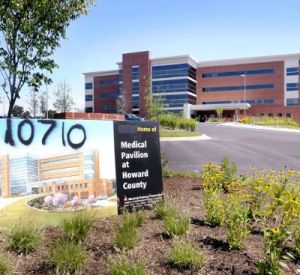Jun 22 2010
Cogdell Spencer ERDMAN is pleased to announce that the Medical Pavilion at Howard County has been certified at the LEED Silver level by the U.S. Green Building Council. Cogdell Spencer ERDMAN completed the design and construction of the 76,000 square foot medical office building in 2009.
Leadership in Energy and Environmental Design (LEED) is an internationally recognized green building certification system developed by the U.S. Green Building Council, providing third-party verification that a building was designed and built using strategies aimed at improving performance across all metrics that matter most: sustainable site solutions, water efficiency, energy and atmosphere optimization, materials and finishes, improved indoor environmental quality, and stewardship of resources and sensitivity to their impacts.
LEED is a point-based system where building projects earn LEED points for satisfying green building criteria. Certification is graded at certified, silver, gold and platinum levels.
 Medical Pavilion at Howard County
Medical Pavilion at Howard County
“We are overwhelmingly proud to have achieved this recognition. Since the initiation of the project in 2003, the planning committee’s goal was to build an environmentally friendly green building,” explained Michael E. Silverman, M.D., chair, Department of Internal Medicine at Howard County General Hospital, A Member of Johns Hopkins Medicine. “It just made perfect sense because the green building concept adds to the health and overall well-being of our staff and patients.”
The Medical Pavilion at Howard County achieved sustainable solutions in the following areas
- Water use was cut by 75% for all site irrigation through a native, drought tolerant landscape design and the use of underground storage of roof water catchment for the irrigation system eliminating the need for municipal water use
- The project was designed and engineered to perform 24% more efficient than applicable energy codes. Energy efficiency measures included improved thermal envelope, high efficiency windows, reduced lighting power density, occupancy sensors, and high efficiency HVAC
- The project was engineered and designed to save over 30% in water use through the use of dual flush water closets and low flow fixtures for sinks, showers, and lavatories
- During construction, 770 tons of metal, concrete, drywall, masonry, wood and cardboard was diverted from the land fill, recycling over 85% of total construction waste
- Use of buildings materials with recycled content
- Building materials sourced from within a 500 mile radius of project location
- Use of wood from suppliers who have received Forest Stewardship Certification
- Use of finish materials such as paints, coatings, adhesives, sealants and carpet systems all meeting strict VOC limits.
- No urea-formaldehyde used in indoor composite wood and agrifiber materials
- Green Housekeeping program reducing the use of toxic chemicals
- Optimizing site topography to create meditation garden directly adjacent to cancer center
A highlight of the project is the healing garden designed to bring beauty and serenity to the cancer center. Healing gardens are a vital aspect of the care environment. The garden is accessible through the campus and the facility, providing a place of respite for users and a sanctuary for patients and their families. A LEED innovation credit was achieved for this amenity.
“The Medical Pavilion at Howard County is an excellent example of the healing environments that can be created with the patient in mind, while maintaining stewardship to sustainability,” said Scott Ransom, President of Cogdell Spencer ERDMAN.
Source: http://www.cogdellspencer.com/